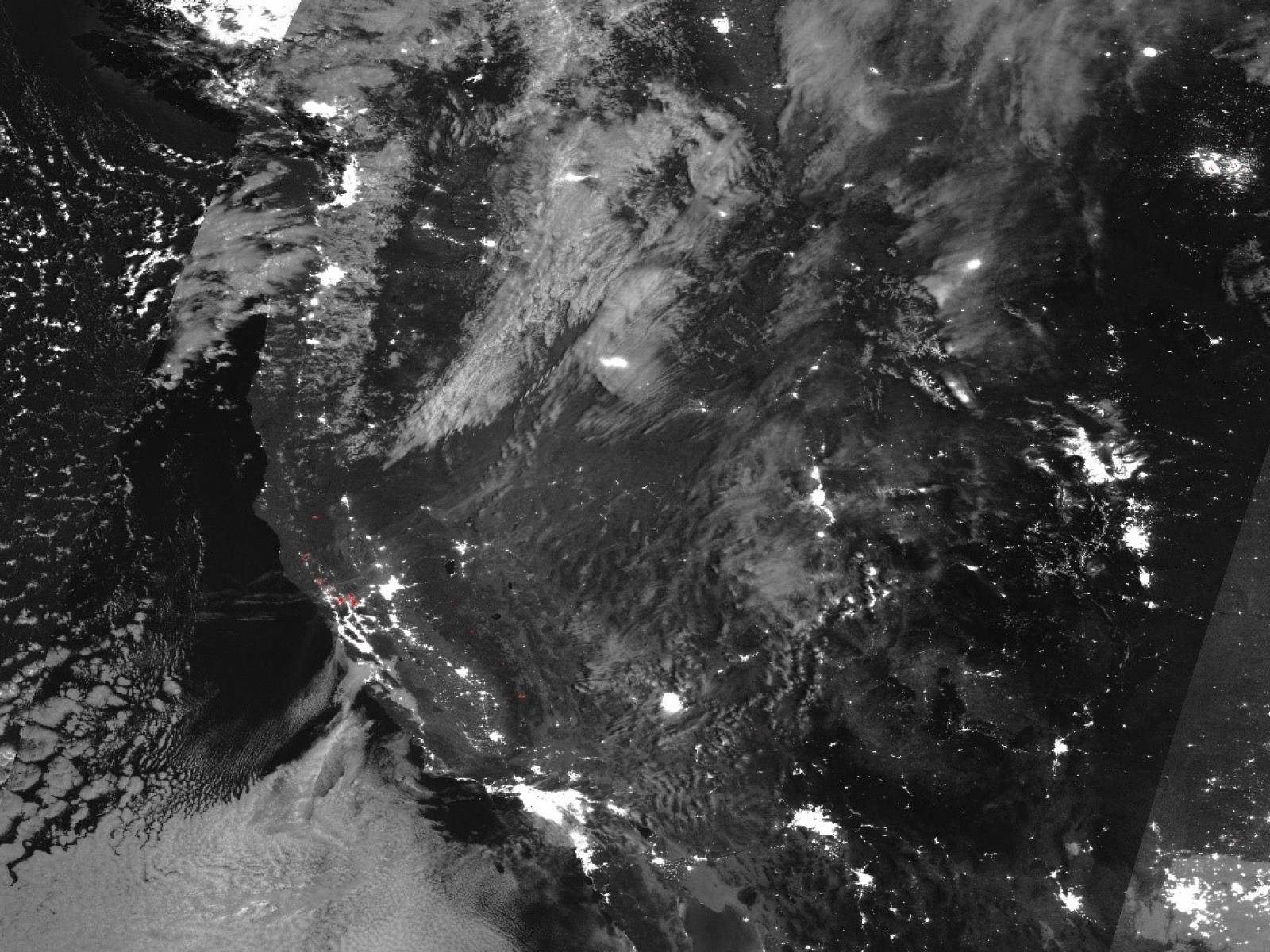Uniform Ocean Warming Dominates Wet California Winters
Warmer ocean strengthens North Pacific westerly jet stream, steers more storms toward California

Uniform warming of sea surface temperatures is the primary contributor to wet winters in California.
(Image: NASA Goddard Space Flight Center | Flickr.com)
The Science
Climate models project increasing winter precipitation, or wetting, over California, a distinct phenomenon from the drying all other Mediterranean climate regions experience under warming. A dynamical effect from an eastward extension of the westerly jet stream over the North Pacific causes the future wetting. Scientists separated the total precipitation change into climate responses to direct CO2 radiative forcing, uniform sea surface temperature (SST) warming, and patterns of SST change. They found that uniform SST warming dominates the wetting and jet extension, while the El Niño-like warming pattern in SST change provides a secondary contribution via tropical teleconnection.
The Impact
California possesses a large population and is a major agricultural production region in the United States. Winter precipitation dominates California’s yearly water supply, so any future changes present profound implications for water resources and crop production in a region already under severe water stress. However, both the magnitude and sign of California’s winter precipitation change have large uncertainties. Understanding the key processes responsible for precipitation changes is an important step toward reducing uncertainties and producing accurate predictions of future precipitation.
Summary
This study analyzed historical and RCP8.5 (a high-emission scenario) experiments from 37 Coupled Model Intercomparison Project Phase 5 coupled models to estimate future precipitation changes in California. By comparing the simulations with four sets of atmospheric modeling experiments with set SSTs, researchers could systematically investigate the relative effects of direct CO2 forcing, uniform SST warming, and SST change patterns on California wetting in response to global warming. The results revealed that the dynamical effects of uniform SST warming primarily contribute to California winter wetting. More specifically, the greater warming of the tropical upper troposphere compared to the lower troposphere, a robust signature of global warming regardless of the SST change pattern, increases the tropics-to-pole temperature gradient and strengthens zonal mean westerly winds in the subtropics. An eastward extension of the westerly jet stream in the North Pacific that steers more winter storms toward California is associated with stronger westerlies. In addition, SST change with an El Niño-like warming pattern has a secondary positive contribution to the jet extension and California wetting. However, significant uncertainty in the El Niño-like warming pattern contributes to uncertainty in the jet extension and future wetting. Relative to the SST effects, the effects of direct CO2 radiative forcing on California wetting are negligible.
PNNL Contact
Ruby Leung, Pacific Northwest National Laboratory, Ruby.Leung@pnnl.gov
Funding
All authors were supported by the U.S. Department of Energy’s Office of Science Biological and Environmental Research through the Regional and Global Model Analysis and Multisector Dynamics program areas.
Published: June 2, 2021
L. Dong & R. Leung. “Winter Precipitation Changes in California Under Global Warming: Contributions of CO2, Uniform SST Warming, and SST Change Patterns.” Geophysical Research Letters, 48(5), e2020GL091736, (2021). [DOI: 10.1029/2020GL091736].